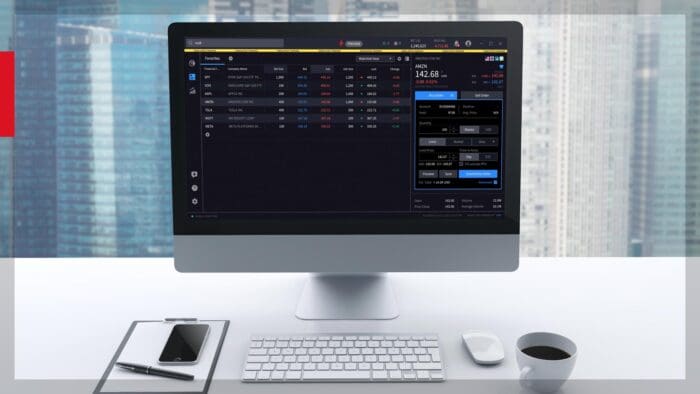Equity investors are hoping to hear words of solace from Fed Chair Jerome Powell this afternoon, since the White House appears determined to undergo a challenging period of transition to get the American economy to a better, more sustainable place. The adjustments, namely confrontational trade policies and reduced government spending, have generated economic growth concerns and uncertainty that may eventually weigh on employment conditions and business investment. Despite the risks, however, price pressures remain well above the central bank’s 2% target, and if the institution shifts to a dovish position, it could add inflationary fuel to the pipeline. Also top of mind for market participants is the FOMC’s update to its dot-plot, including where the committee estimates GDP, unemployment, inflation and short-term rates will be in the future.
Stocks Want Reassurance
Trading is bifurcated across asset classes today ahead of the Fed’s decision, with stocks and the dollar moving north, commodities mixed and Treasurys experiencing some selling pressure. All major equity benchmarks are gaining as the Nasdaq 100, S&P 500, Russell 2000 and Dow Jones Industrial gauges march up 0.9%, 0.7%, 0.6% and 0.5%. The offensive sectors are leading the way higher and are led by technology, consumer discretionary and industrials; those are up 1.2%, 1.1% and 0.8% while four other components climb by lesser amounts. The defensive segments, which are comprised of consumer staples, health care and utilities, are travelling south by 0.3%, 0.2% and 0.1%. Real estate is also trimming 0.1% on the session. Treasurys are being sold in the morning and the 2- and 10-year maturities are changing hands at 4.08% and 4.31%, 4 and 2 basis points (bps) heavier today. Pricier borrowing costs are supporting the greenback; its index is up 40 bps as the US currency appreciates relative all of its major counterparts including the euro, pound sterling, franc, yen, yuan, loonie and Aussie tender. Commodities are mixed with copper and crude oil up 1.6% and 0.6% but silver, lumber and gold are lighter by 1.3%, 0.6% and 0.2%. WTI is trading at $66.92 per barrel on a mixed Energy Information Administration report depicting an increase in stateside crude supplies amidst a decline in gasoline and distillate inventories.
Expecting a Dovish Pause from the Fed
I’m expecting the Fed to respond to the tense landscape by marking down its projections of economic growth, bumping up its expectations of unemployment and inflation and leaving its rate outlook unchanged at two cuts for 2025. Commentary from Chair Powell is critical, however, including if the central bank acknowledges a slowdown in activity in light of rising variabilities. Against this backdrop, will Powell suggest swift monetary policy accommodation shall labor conditions deteriorate, reiterating a greater sensitivity to joblessness over the other side of the FOMC’s mandate? I’ll also be looking for an update on quantitative tightening and whether the committee slows the pace of balance sheet runoff due to debt-ceiling events which could weigh on Treasury market liquidity. Additionally, I think the group will reflect on tariff developments as a driver of longer-term cost pressures, while admitting that fiscal budget balancing is a necessary endeavor at this juncture. Finally, words of support would likely reignite animal spirits in financial markets, but a focus on prices and other unknown variables would push the Fed put further south.
International Roundup
Japan Holds Rates Steady
As expected, the Bank of Japan (BOJ) decided yesterday to hold its key benchmark at 0.50% and the organization’s leader, Governor Kazuo Ueda, said that policymakers are watching wage pressures and food price increases that could contribute to additional inflation. At the same time, they are assessing global economic uncertainty resulting from tariffs and other trade tensions. Members of BOJ’s rate setting body voted unanimously on the decision.
And Produces Trade Surplus
Also yesterday, the country reported a 584.5 billion yen ($3.9 billion) trade surplus in February with exports climbing 11.4% year over year (y/y), which fell below the 12.1% consensus estimate and the previous period’s 7.3%. Additionally, imports declined 0.7% compared to expectations for a 0.1% increase and January’s 16.2% jump. Among exports, cars, semiconductor manufacturing equipment and chips experienced the strong gains, in part due to companies stockpiling inventory prior to the US implementing potential tariffs. Simultaneously, Japan’s imports of oil and coal dipped.
Separately, machinery orders climbed 4.4% y/y in January but fell 3.5% month over month (m/m). Analysts anticipated a 6.9% y/y increase and only a 0.5 m/m drop. In December, orders increased 4.3% y/y but dropped 0.8% m/m.
Aussie Leading Indicator Strengthens
The Australia Westpac Leading Economic Indicator climbed at an annualized rate of 0.8% during the six-month period ended in February compared to the 0.6% gain in January. Westpac notes that the strengthening resulted largely from increases in commodity prices and a weaker Australian dollar. The strong index result occurred despite equities declining in reaction to concerns about potential US tariffs.
Disclosure: Interactive Brokers Affiliate
Information posted on IBKR Campus that is provided by third-parties does NOT constitute a recommendation that you should contract for the services of that third party. Third-party participants who contribute to IBKR Campus are independent of Interactive Brokers and Interactive Brokers does not make any representations or warranties concerning the services offered, their past or future performance, or the accuracy of the information provided by the third party. Past performance is no guarantee of future results.
This material is from IBKR Macroeconomics, an affiliate of Interactive Brokers LLC, and is being posted with its permission. The views expressed in this material are solely those of the author and/or IBKR Macroeconomics and Interactive Brokers is not endorsing or recommending any investment or trading discussed in the material. This material is not and should not be construed as an offer to buy or sell any security. It should not be construed as research or investment advice or a recommendation to buy, sell or hold any security or commodity. This material does not and is not intended to take into account the particular financial conditions, investment objectives or requirements of individual customers. Before acting on this material, you should consider whether it is suitable for your particular circumstances and, as necessary, seek professional advice.




















Join The Conversation
For specific platform feedback and suggestions, please submit it directly to our team using these instructions.
If you have an account-specific question or concern, please reach out to Client Services.
We encourage you to look through our FAQs before posting. Your question may already be covered!